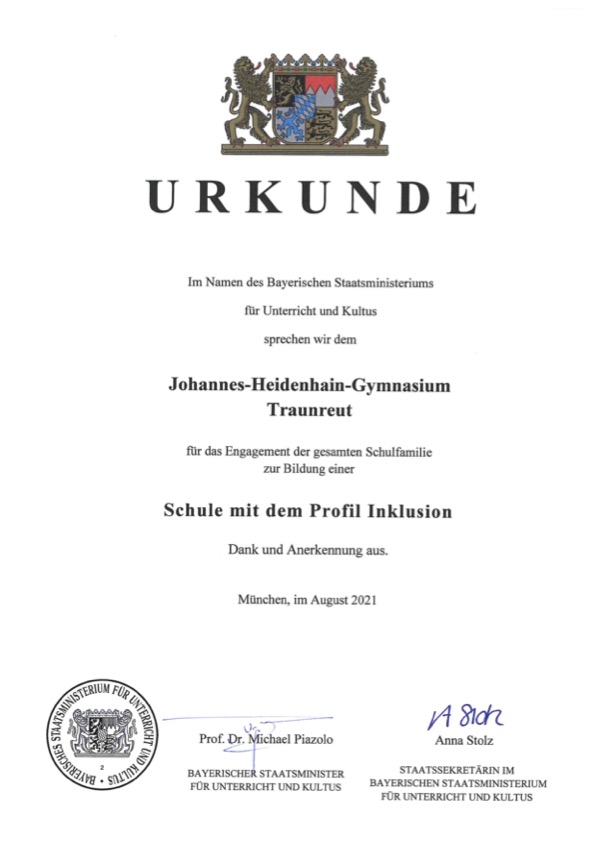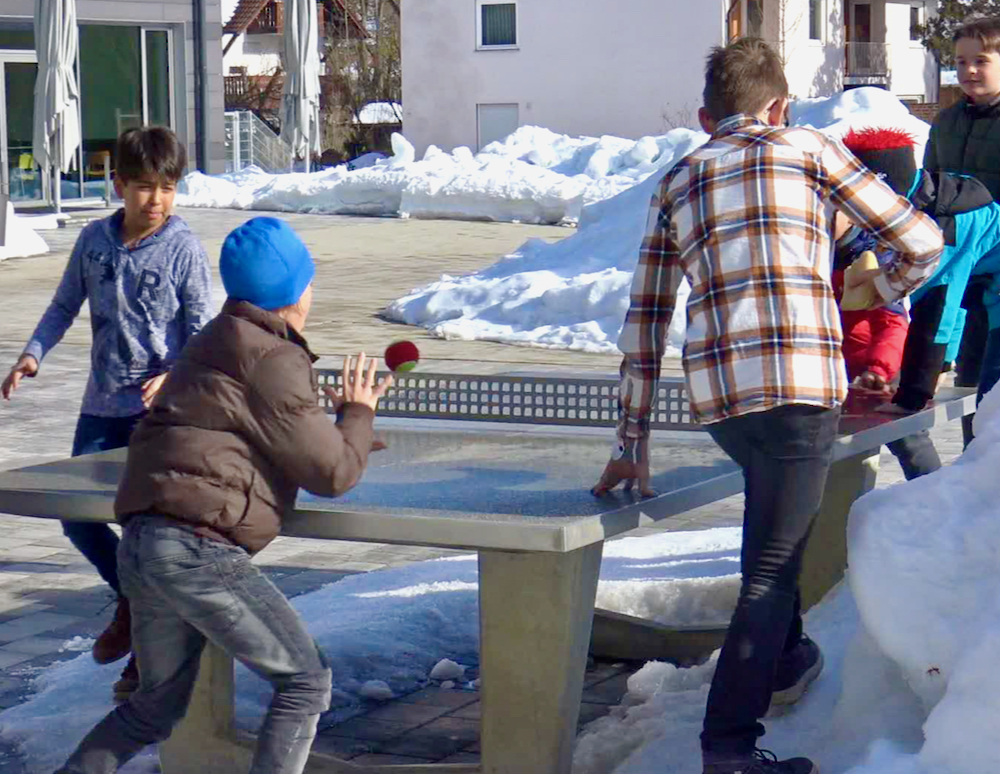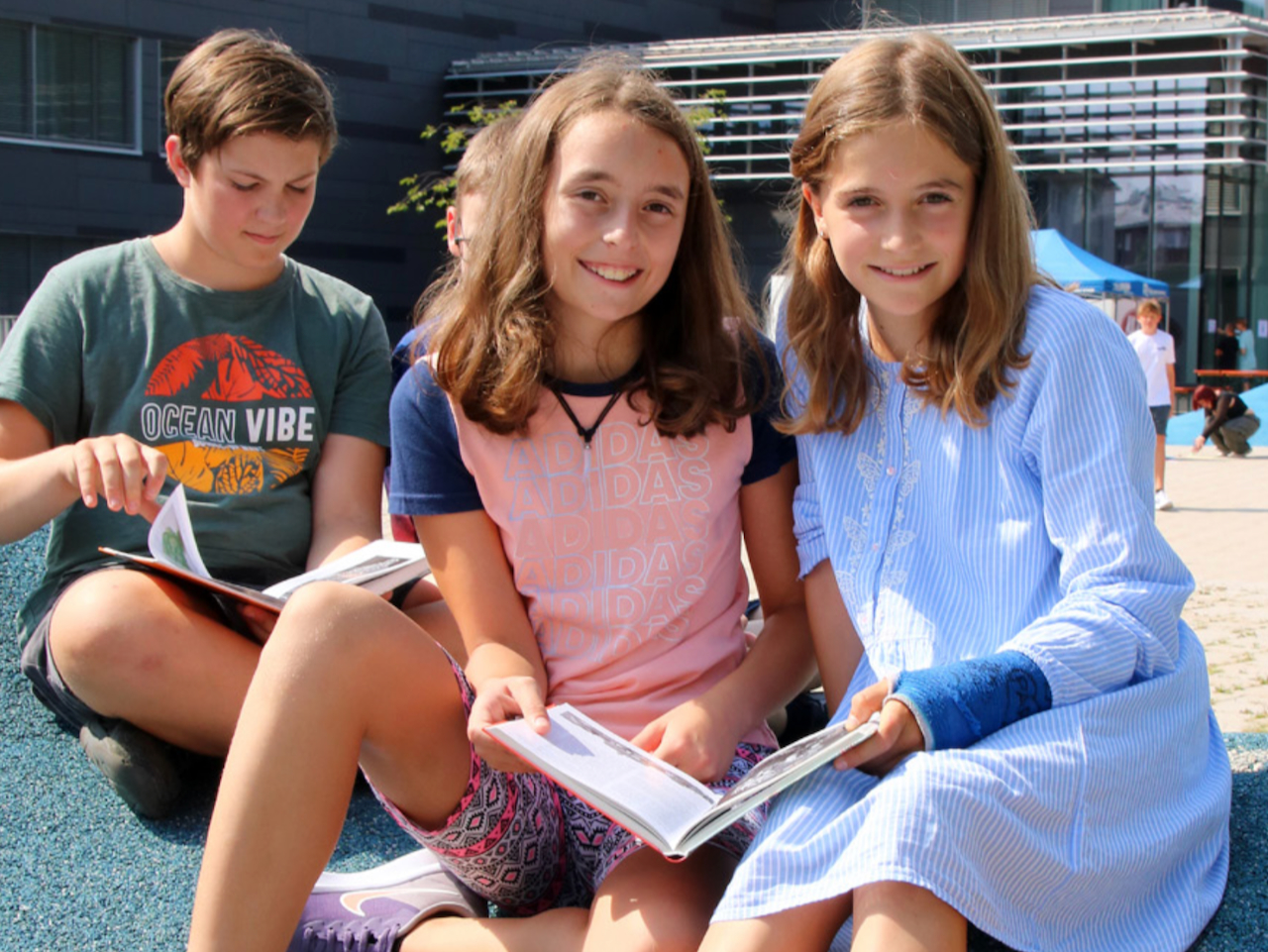
 Last Tuesday, we visited the Salzburg Schauspielhaus to see a rendition of the famed novel “1984”, by George Orwell. Set in the tyrannical superstate of Oceania, it depicts the struggles of outer Party worker Winston, as well as the fiery romance between him and co-worker Julia.
Last Tuesday, we visited the Salzburg Schauspielhaus to see a rendition of the famed novel “1984”, by George Orwell. Set in the tyrannical superstate of Oceania, it depicts the struggles of outer Party worker Winston, as well as the fiery romance between him and co-worker Julia.
The scenery is minimalist, with only a couple of curtains acting as either partitions or the Telescreens used by the state to bug its citizens day and night. The props are scarce, requiring the viewer to imagine what certain configurations of black boxes might resemble, among other things.
As Winston wakes up, we are greeted by a projection of a personal trainer who looks as though she came straight from a yoga program. The dramaturgist we later spoke to explained that much of the aesthetic of the play is an ironic reference to the title of the play- and indeed, from the coloured slime used to represent everything from a coral to unmentionable bodily fluids to the Slinkies and cheesy personal trainer videos used instead of the more austere trainer one would expect from an interpretation of 1984, props nodded to the time this dystopia takes place in. However, in my opinion, this running gag also allowed the audience to reflect on actual societies that mirrored the society from 1984- take the USSR, for example, as well as most of the eastern bloc. The choice of clothing was also deliberate- the mustard overalls providing uniformity as well as unnerving warmth to the otherwise sterile set. The amount of English used was attributed to the director’s heeding to the original English copy. However, it also gave a hint of modernity to the otherwise German dialogue. The torture scene was clean and bare, with the bright white background and strobe lights not only serving to put the audience at unease, but also confuse them: while watching the scene, one lost all sense of time. There existed a certain eeriness as Winston, stripped of the usual overalls, was chained to the ceiling wearing only underwear and a collar, putting him at the utter mercy of O’Brien.
 All in all, 1984 was an expertly crafted piece from beginning to end. The stage left nothing to be desired. It was decluttered and minimalist, but left just enough onstage so as to leave the viewer in no doubt as to where the scene was set. Furthermore, the props, though few, were placed expertly throughout the play. Julia’s outfit, the same mustard overall but with an “anti-Sex League” sash, left her recognisable but still undoubtedly uniform. As well as this, I was pleased with the change of costumes throughout the play; the change from their Party outfits to white underwear signified their helplessness and their unwillingness to conform equally. Despite the dramaturgist’s insisting that the use of slime instead of a coral was yet another allusion to the running 80s gag, I prefer to think that the sticky slime was a metaphor for the resilience of the past, regardless of how much it is attacked.
All in all, 1984 was an expertly crafted piece from beginning to end. The stage left nothing to be desired. It was decluttered and minimalist, but left just enough onstage so as to leave the viewer in no doubt as to where the scene was set. Furthermore, the props, though few, were placed expertly throughout the play. Julia’s outfit, the same mustard overall but with an “anti-Sex League” sash, left her recognisable but still undoubtedly uniform. As well as this, I was pleased with the change of costumes throughout the play; the change from their Party outfits to white underwear signified their helplessness and their unwillingness to conform equally. Despite the dramaturgist’s insisting that the use of slime instead of a coral was yet another allusion to the running 80s gag, I prefer to think that the sticky slime was a metaphor for the resilience of the past, regardless of how much it is attacked.
The only thing that would have further improved this play would be more accuracy; at times, entire scenes were omitted, and, despite, as the dramaturgist quite rightly says, there being a limited amount of resources with which to create scenes, settings such as the Chestnut Tree cafe were vital for the development of the plot. That notwithstanding, I wholly enjoyed watching this play, since it offered an easier-to-digest version of my favourite (or one of my favourite!) books in a format that wasn’t as heavy as the movie; I can only recommend this book; it is, for want of better words, doubleplusgood.
Jonas Tejada-Heidenhain (Q11)






















